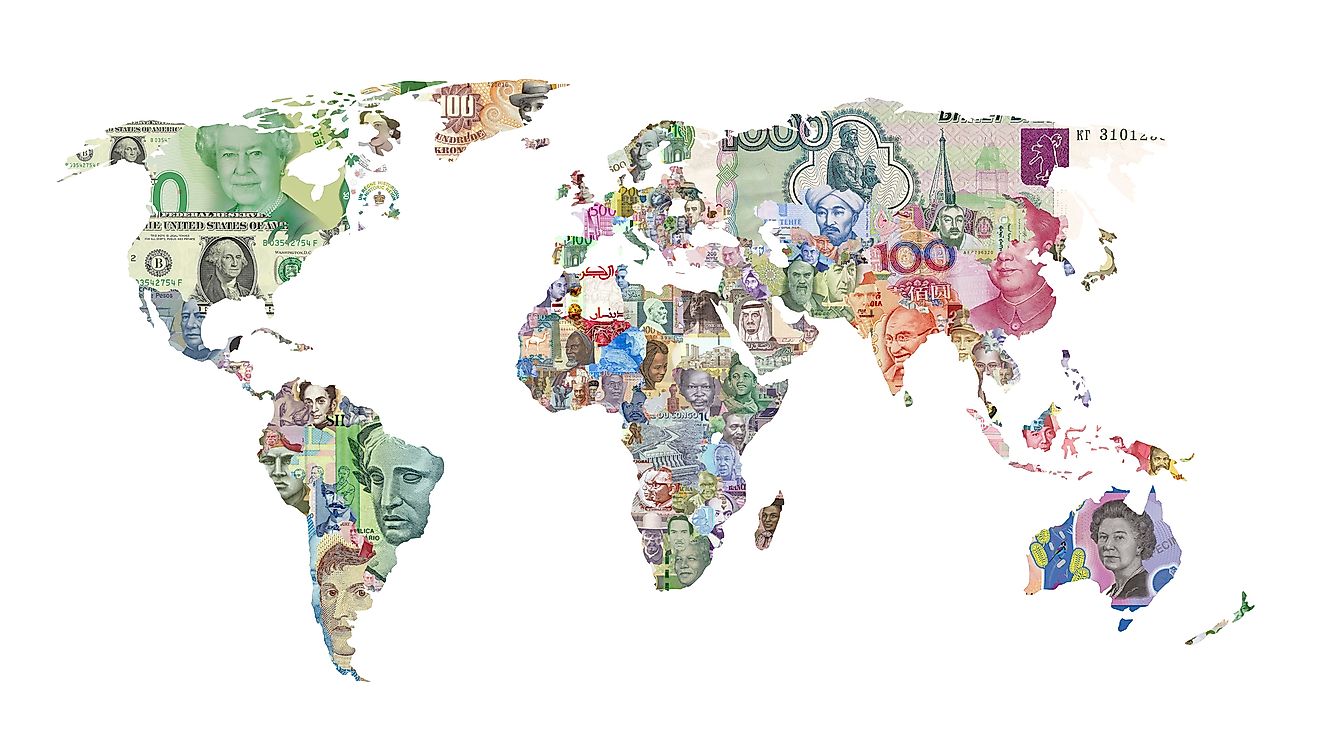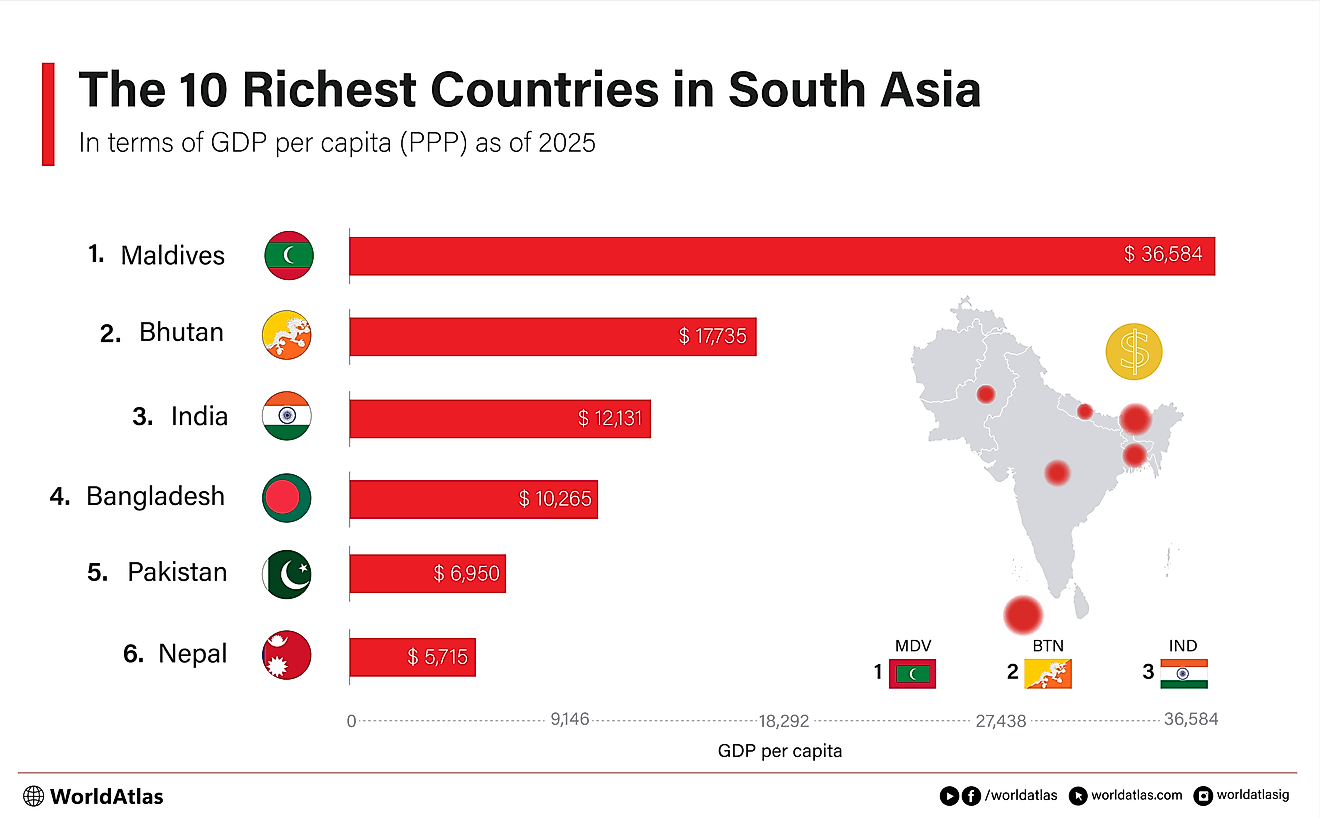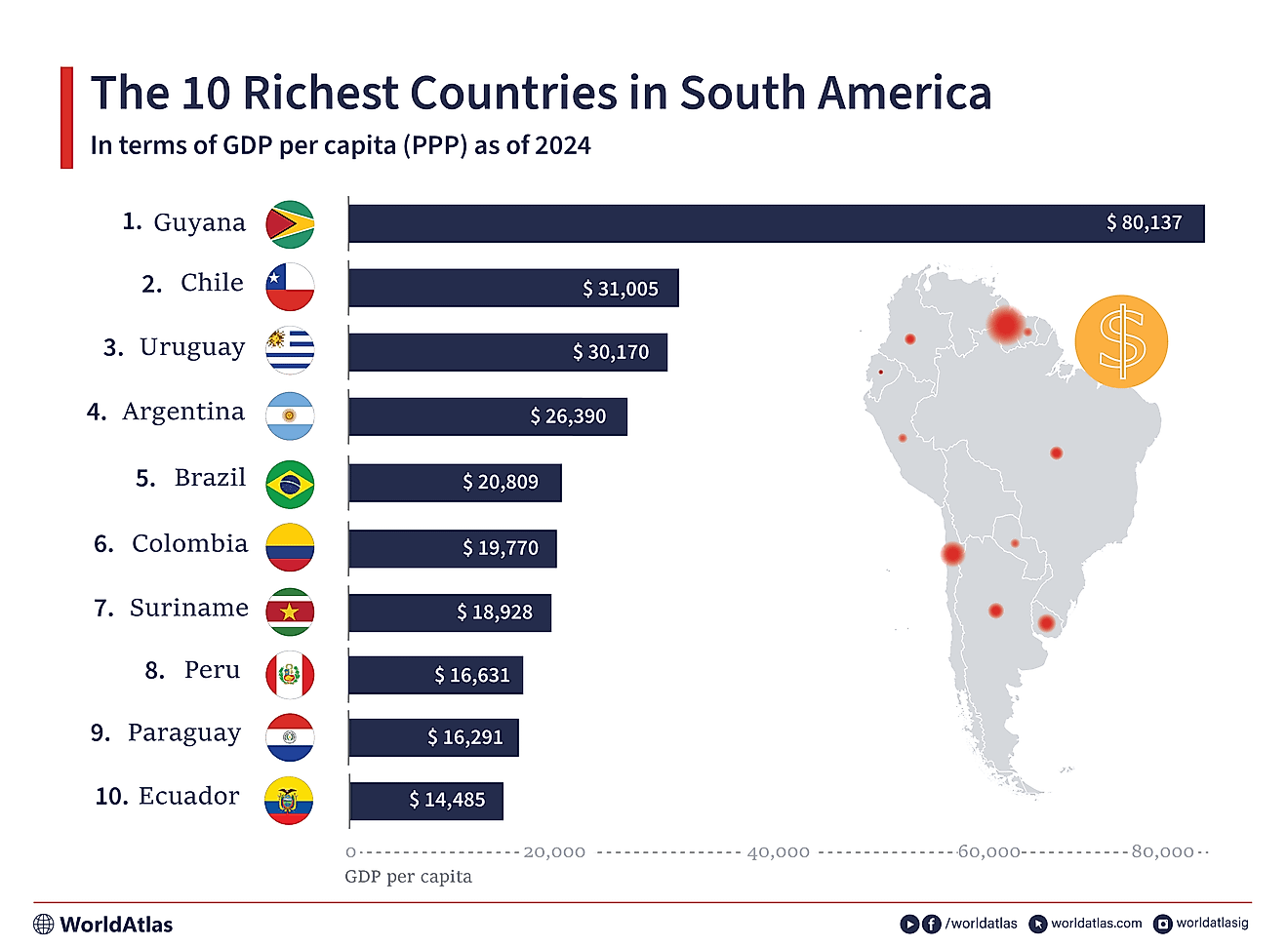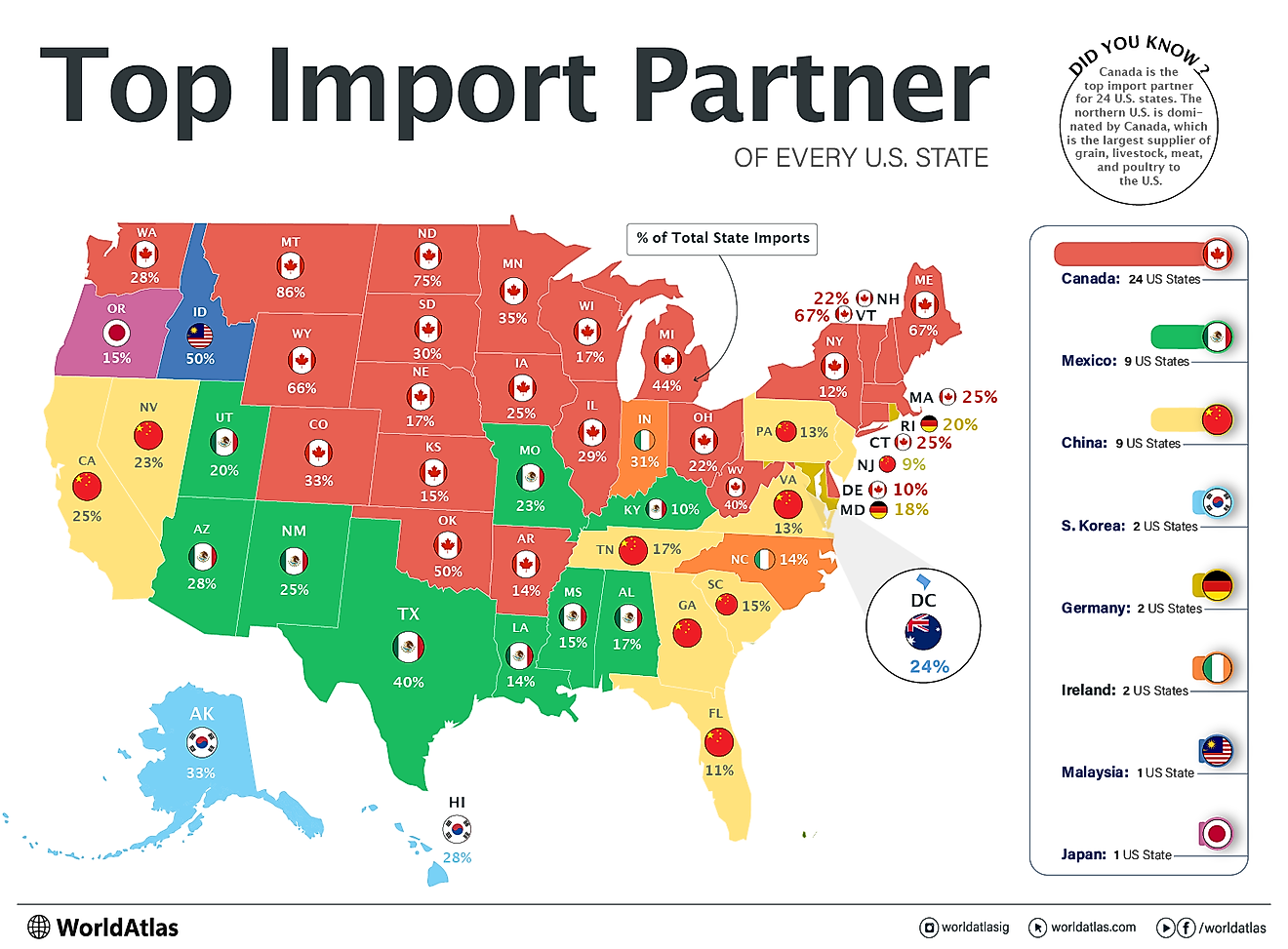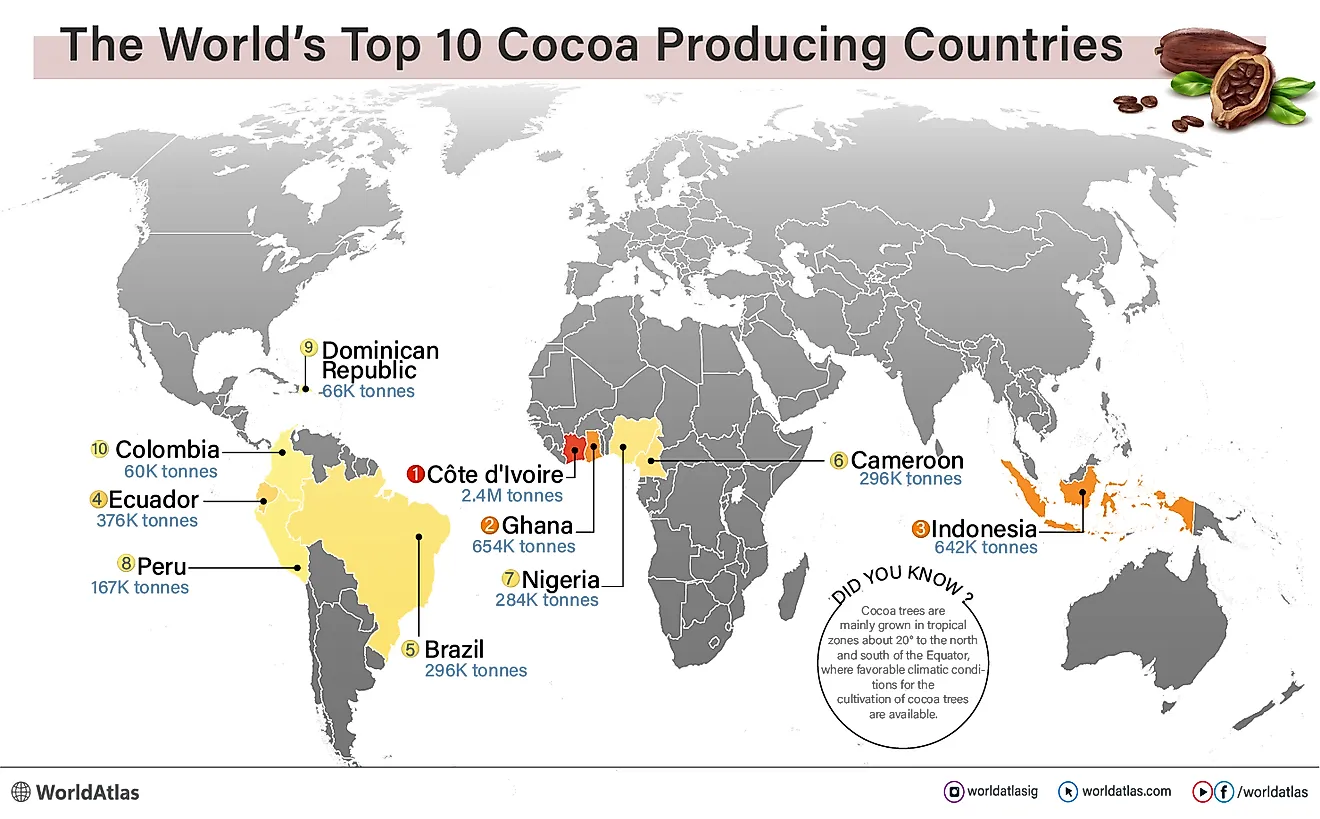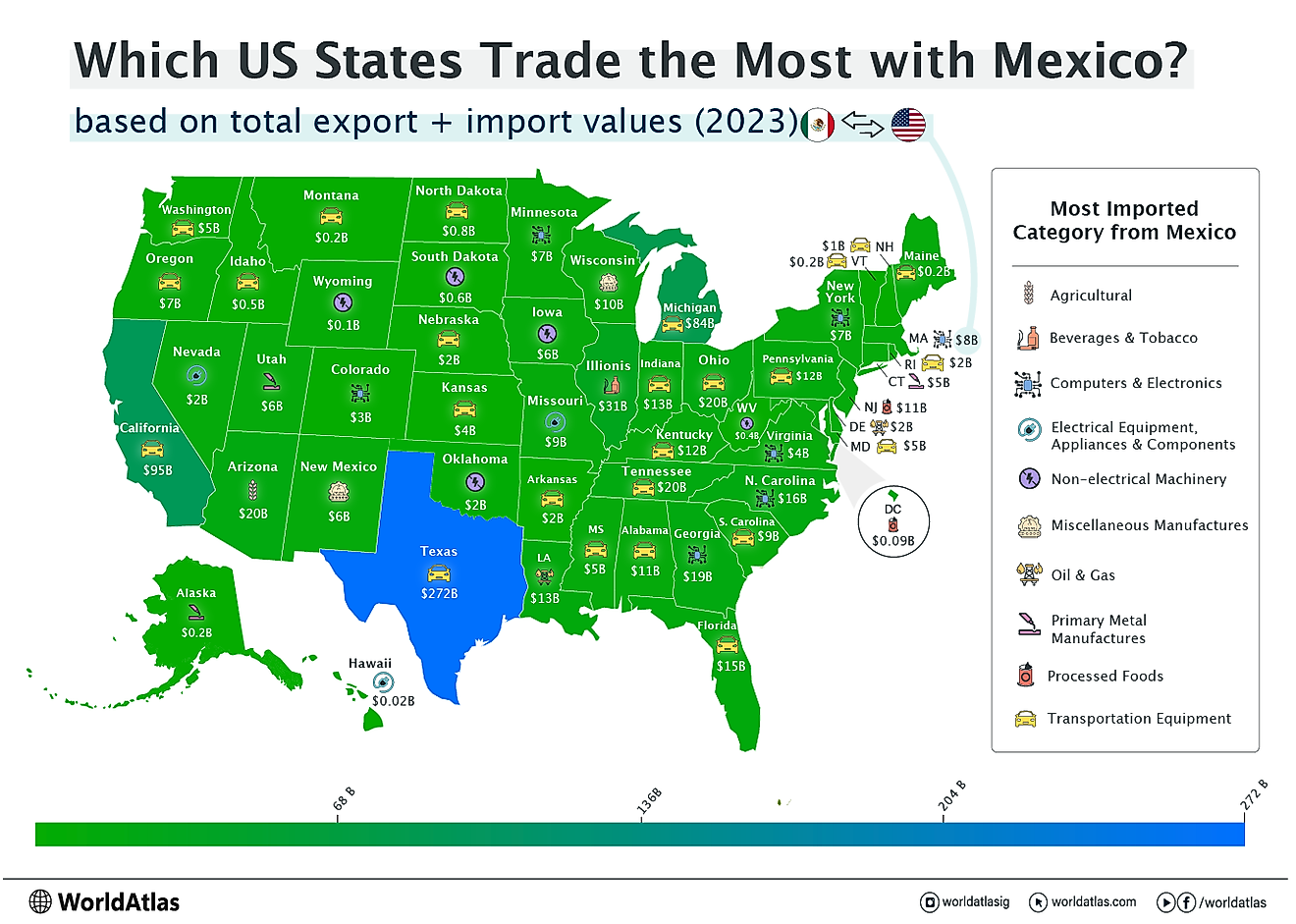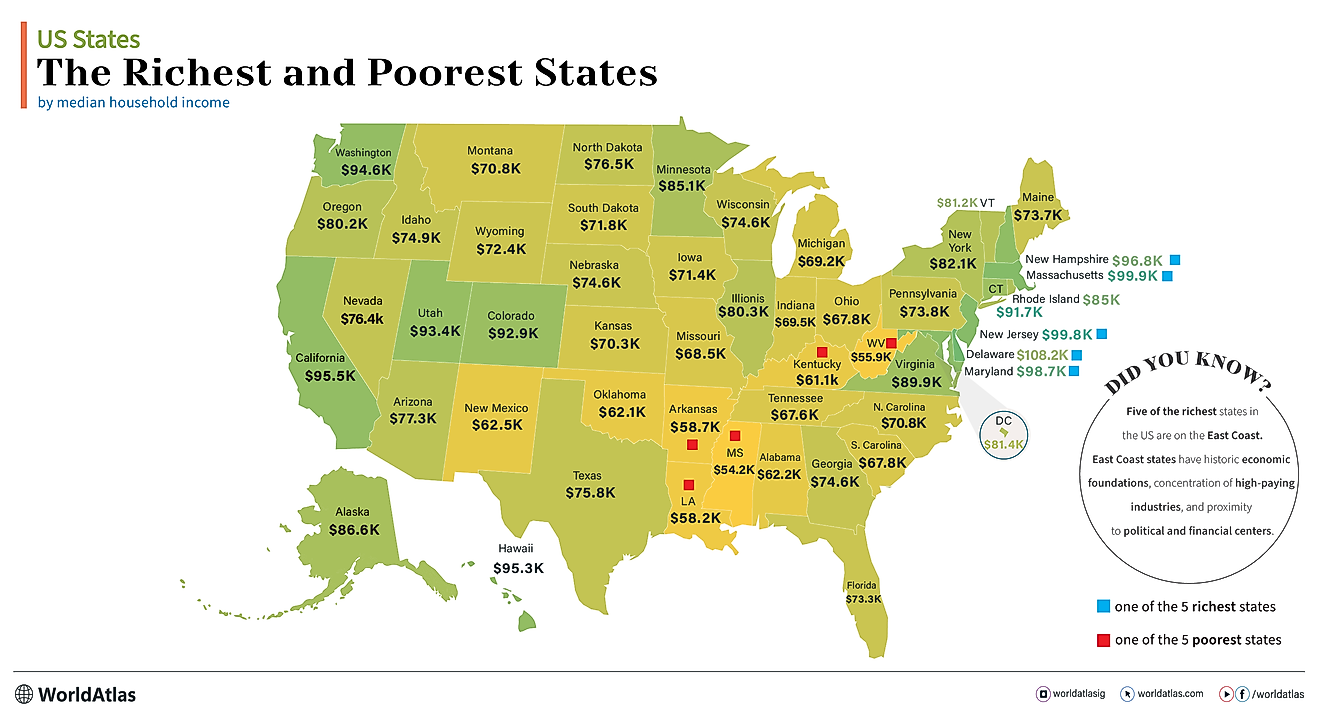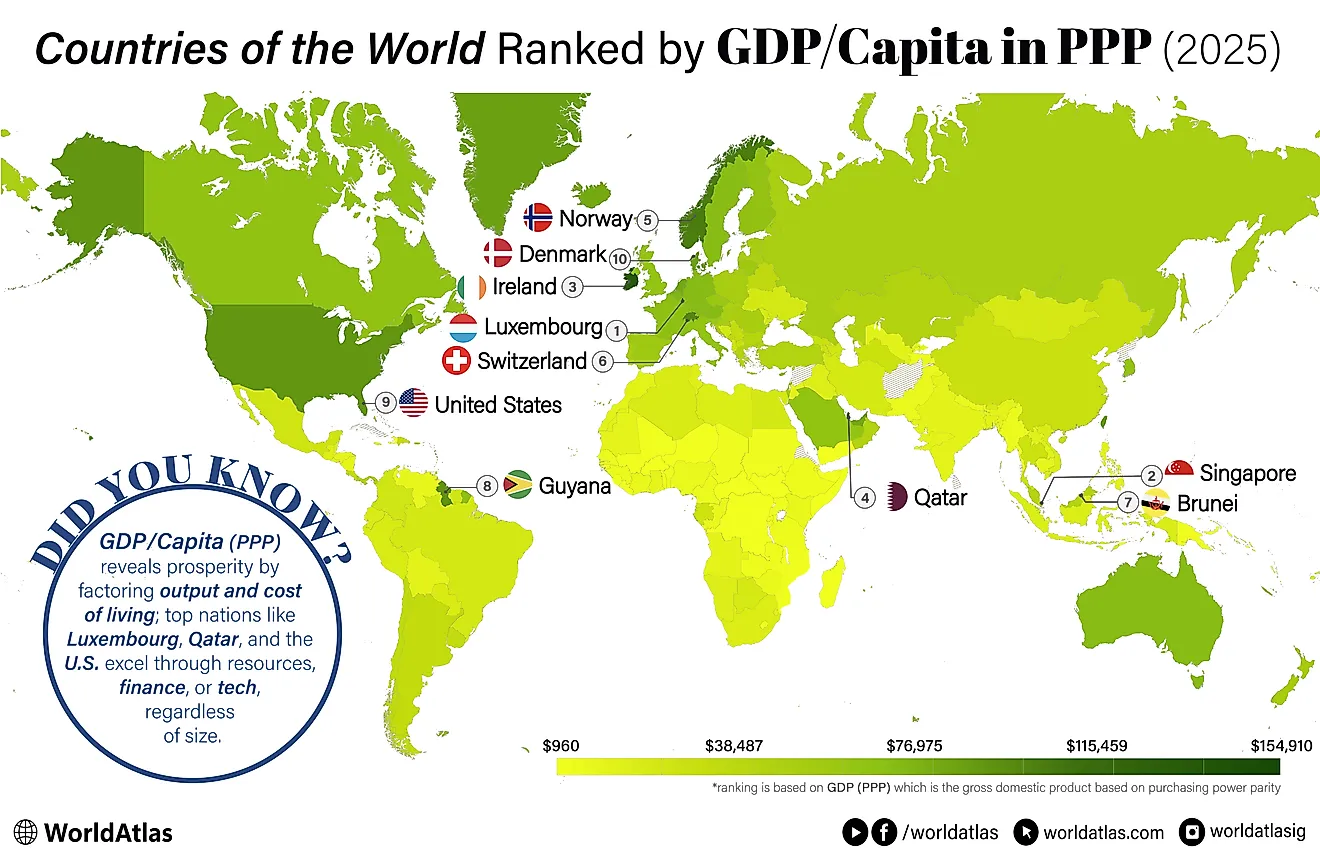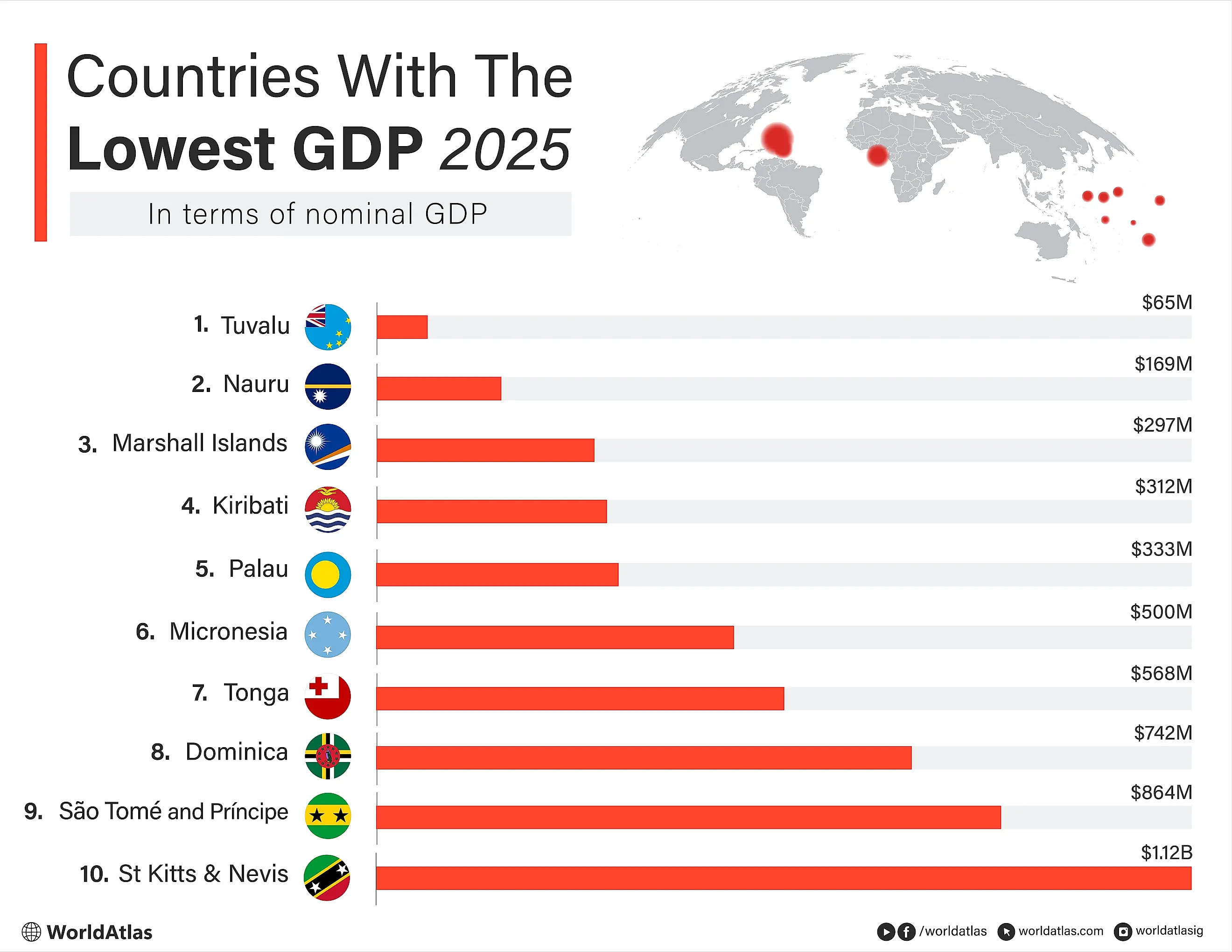
Countries with the Lowest GDP 2025
Nominal GDP (total output measured in current U.S. dollars) places the countries of the world on a spectrum with far-reaching extremes, helping us assess the size of each country's economy. At one end sit the trillion-dollar giants; at the other, a handful of micro-states whose entire annual production would barely fund a midsize shopping mall. These nations are usually tiny islands or archipelagos, often scattered across the Pacific or Caribbean, and their economic fortunes hinge on a volatile mix of geography, history, and external assistance.
Several structural hurdles keep these economies near the bottom of the global league table. Sparse populations mean tiny domestic markets; isolation drives up freight costs; and wafer-thin resource endowments leave few obvious export engines. As a result, government revenue is frequently propped up by highly specialised niches like tuna-fishing licences in Tuvalu and Nauru, ship registries in the Marshall Islands, or citizenship-by-investment programmes in Dominica and Saint Kitts & Nevis. Tourism can boom spectacularly, then vanish overnight, as Palau learned during the pandemic, while climate-change threats hang over virtually every coral atoll and hurricane belt on the list.
Low aggregate output does not always translate into extreme poverty. Palau and Saint Kitts & Nevis, for example, post mid-five-figure incomes per capita, yet still make this ranking simply because so few people share the pie. Conversely, countries such as Tuvalu, Kiribati and the Federated States of Micronesia struggle with both meagre total GDP and modest per-person earnings, leaving them doubly exposed whenever aid flows waver or commodity prices swing.
Below, we take a closer look at the ten economies forecast by the IMF to record the lowest nominal GDPs in 2025. Tuvalu, Nauru, and the Marshall Islands have the world’s lowest nominal GDPs in 2025, at roughly $65 million, $169 million, and $297 million, respectively.
10 Countries With The Lowest GDP Worldwide For 2025
| Rank | Country | GDP (USD) |
|---|---|---|
| 1 | Tuvalu | $65 million |
| 2 | Nauru | $169 million |
| 3 | Marshall Islands | $297 million |
| 4 | Kiribati | $312 million |
| 5 | Palau | $333 million |
| 6 | Micronesia, Fed. States of | $500 million |
| 7 | Tonga | $568 million |
| 8 | Dominica | $742 million |
| 9 | Sao Tome and Principe | $864 million |
| 10 | Saint Kitts and Nevis | $1.13 billion |
Jump to the list of all countries ranked by GDP/Capita (PPP)
1. Tuvalu - $65 million GDP

Tuvalu, a remote Polynesian micro-state of roughly 11,000 people, has the world’s lowest 2025 nominal GDP at just $65 million USD. Economic activity is hampered by a tiny land area, isolation, and scarce natural resources. Government revenue depends heavily on tuna-fishing licences, royalties from the coveted .tv internet domain, and donor-supported trust funds whose capital exceeds 2.5-3.5 times GDP. Subsistence copra farming and coastal fishing dominate livelihoods, while formal jobs are largely public-sector; remittances from seafarers have waned. Tourism is negligible. Growth rebounded after COVID-19 to 3.9% in 2023 but is forecast to slow to 2.4% by 2025, with climate-driven shocks and import reliance keeping Tuvalu extremely vulnerable to external price swings.
2. Nauru - $169 million GDP
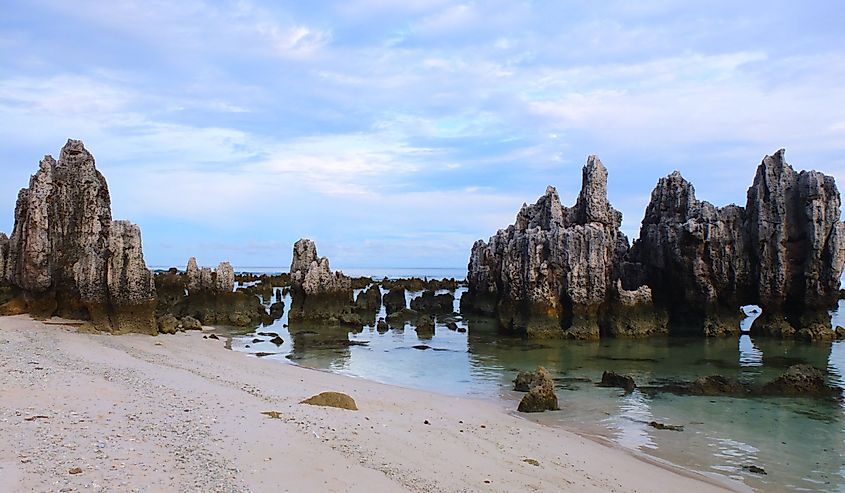
Nauru, the world’s third-smallest nation (~12,000 people), has the second lowest GDP in the world at $169 million USD. After a 20th-century boom from guano-derived phosphate, the resource is largely exhausted and growth now hinges on volatile revenue streams. Chief inflows come from tuna-fishing licences in its EEZ, Australian payments for the Regional Processing Centre for asylum seekers, and aid from Australia, Taiwan, and New Zealand. Services generate 61% of output, industry, mainly residual phosphate operations, 33%, and agriculture just 6%. GDP growth has averaged below 2% since 2019 and is forecast at 2% in 2025, with inflation near 2%. Unemployment hovers around 25%, and the island imports almost all food and fuel. Public debt, once crippling, is projected to fall to 21% of GDP amid balanced budgets, but fragile banking links and environmental degradation keep Nauru highly vulnerable.
3. Marshall Islands - $297 million GDP
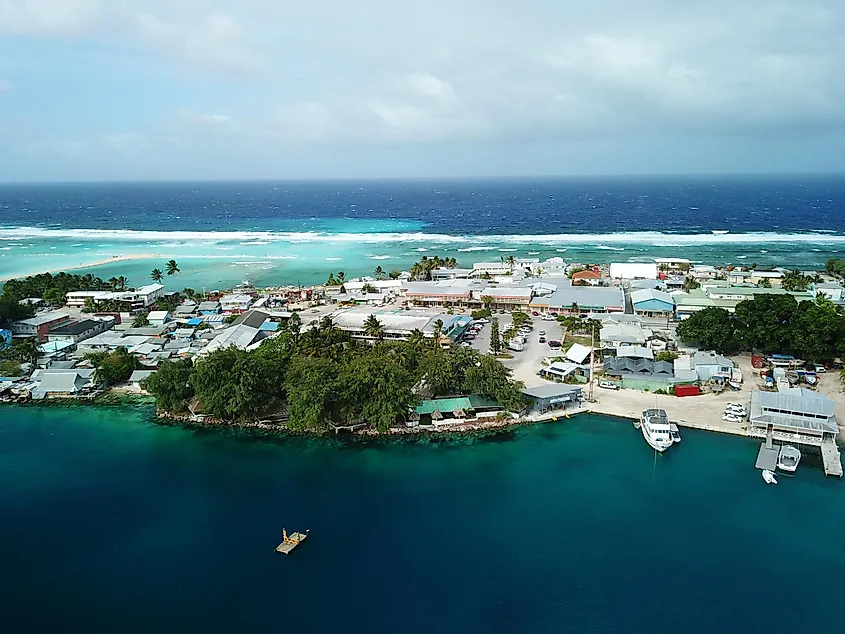
The Marshall Islands, a scattered Micronesian atoll nation of roughly 42,000 residents, is projected to post a nominal GDP of only USD $0.29 billion in 2025, among the world’s smallest, and per-capita output of around US $7,159. The economy pivots on U.S. payments under the amended Compact of Free Association, lease fees for the Kwajalein missile-test base, and aid that still covers about 60% of government outlays and employs 31% of workers. Copra production and tuna fishing dominate the small private sector, supplemented by a fledgling Majuro cannery, ship- and company-registry revenue, and experiments in coconut-oil biofuel. A proposed blockchain-based Sovereign digital currency remains controversial after IMF warnings. Reliance on imports leaves the trade balance deeply negative, while climate change, a 2025 U.S. tariff, and Compact funding expiry in 2024 threaten future stability. GDP growth averages 2%, inflation hovers below 1%, no central bank exists, and emigration to the United States continues to shrink labour supply domestic.
4. Kiribati - $312 million GDP
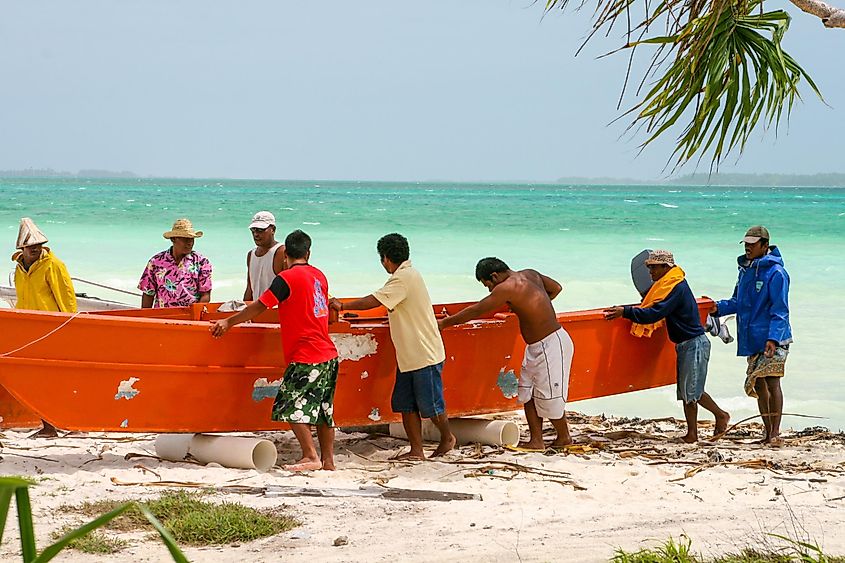
Kiribati, a scattered chain of atolls straddling 5,000 km of ocean, is projected to stay near the bottom of the 2025 GDP league with nominal output around $0.312 billion USD. After phosphate reserves on Banaba were exhausted in 1979, the economy became heavily aid-dependent; overseas grants, remittances from seafarers, and tuna-fishing licences now fund most imports and half the budget. The Revenue Equalization Reserve Fund, worth about A$570 million, cushions shocks but was hit by the global financial crisis. Structural hurdles, minuscule land area, extreme dispersion, high freight costs, and rising sea levels, constrain private activity. Agriculture and handicrafts remain largely subsistence; copra provides two-thirds of merchandise exports, while tourism draws fewer than 4,000 visitors each year. Services generate 68% of GDP, industry 8%, and agriculture 24%.
5. Palau - $333 million GDP
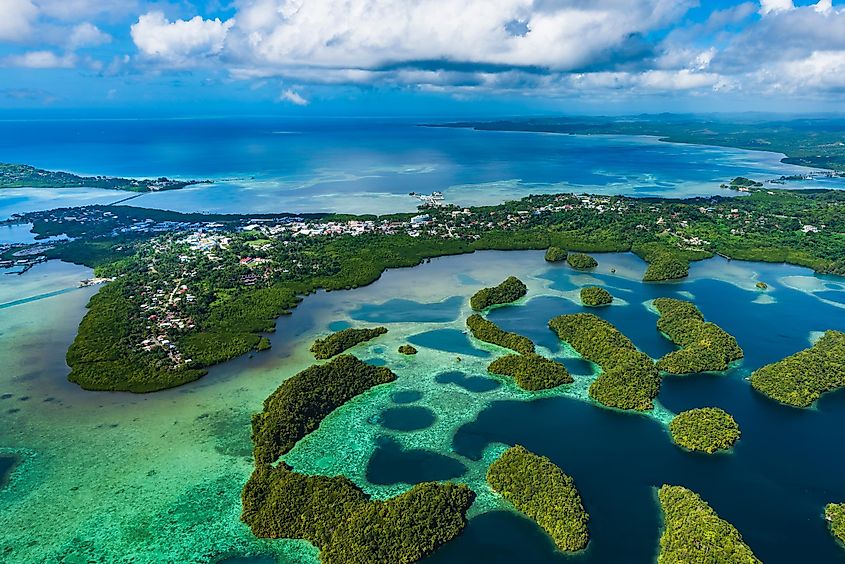
Palau, an archipelago of ~18,000 people, is forecast to record a nominal GDP of just US$ $0.33 billion in 2025, keeping it near the very bottom of the global rankings yet with one of Oceania’s highest per-capita incomes (~ $16,000-17,000 USD). Tourism, chiefly scuba diving amid world-class reefs, supplies about four-fifths of output and half of foreign exchange, but the COVID-19 collapse showed its fragility: GDP sank 12% in FY 2021 before rebounding toward an IMF-reported 6.5 % growth in FY 2024 and an ADB-projected 8% in FY 2025 as Asian arrivals recover. Government employment (~30 % of jobs) and large U.S. Compact of Free Association grants remain critical; a sovereign trust fund established for the post-grant era held roughly $140 million USD in 2009 and has since grown. Construction tied to infrastructure aid, subsistence farming and near-shore fishing round out activity, while limited tuna-licence fees and tiny exports leave a chronic trade gap. Palau’s challenge is diversifying beyond aid-and-tourism dependence and cushioning climate-related shocks.
6. Micronesia - $500 million GDP
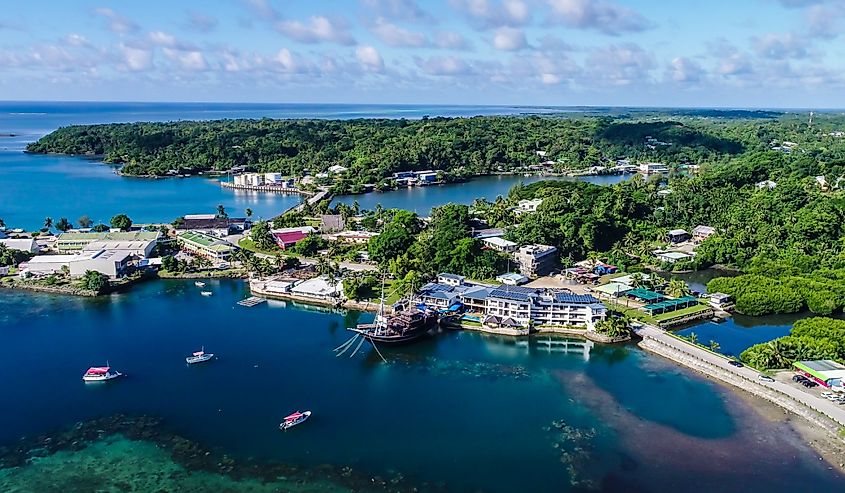
Federated States of Micronesia (FSM), a Pacific nation of about 113,000 people, is projected to post one of 2025’s smallest nominal GDPs, around $0.5 billion USD, or roughly $4,400 per capita. Economic activity remains dominated by government spending financed by the United States: Compact of Free Association grants and services have exceeded $2 billion since 1986 and still fund more than one-third of GDP. Public entities employ over half the workforce, while licensing fees from foreign tuna fleets supply nearly 30% of domestic revenue. Marine products, mainly fish re-exports, generate 85% of export earnings; subsistence farming of coconuts, bananas, and root crops supports households. Tourism’s growth potential is constrained by remoteness and limited infrastructure, attracting only about 15,000 visitors per year. A light tax burden (~11% of GDP) and external debt near 50% of GDP underline the vulnerability that will persist if grants diminish, royalties and phosphate remain minor financial buffers.
7. Tonga - $568 million GDP
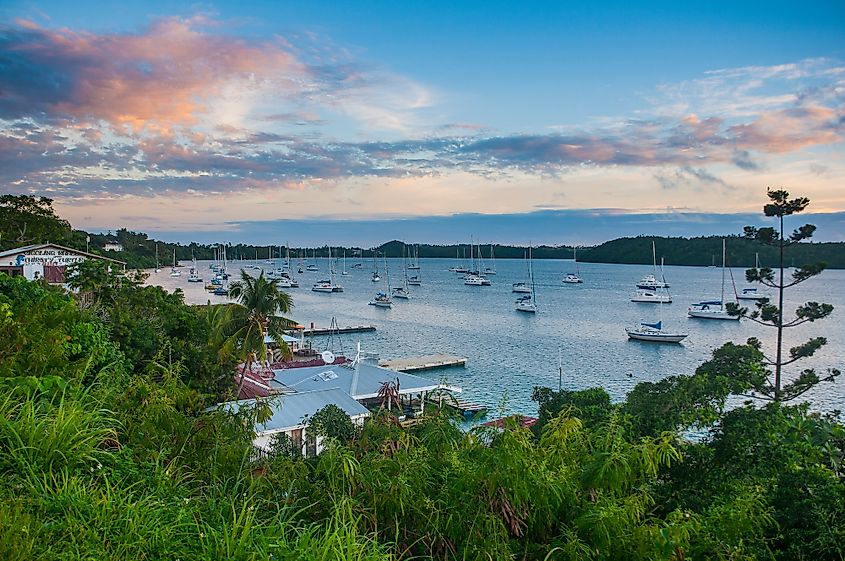
Tonga, a Polynesian kingdom of 105,000 people, is forecast to record one of 2025’s smallest nominal GDPs at about $0.57 billion USD, roughly $5,400 USD per capita. Agriculture still underpins output and employs most rural households; cash earnings hinge on squash, coconuts, vanilla, and fisheries, while yams, taro, and root crops feed the domestic market. Heavy reliance on food and fuel imports keeps the trade balance deeply negative, bridged by sizeable remittances from the half-million-strong diaspora and by foreign aid. Tourism, centred on whale-watching, diving and cruise calls, has been recovering since the volcanic-tsunami disaster of January 2022 and now rivals agriculture for foreign exchange. Manufacturing remains limited to food processing, handicrafts, and small construction firms. Government plans focus on boosting private enterprise, expanding renewable energy to 70% of supply by 2030, and upgrading transport links, yet the monarchy-owned land system, narrow export base, and climate-change risks leave Tonga economically fragile despite steady 2-3% real-growth projections.
8. Dominica - $742 million GDP
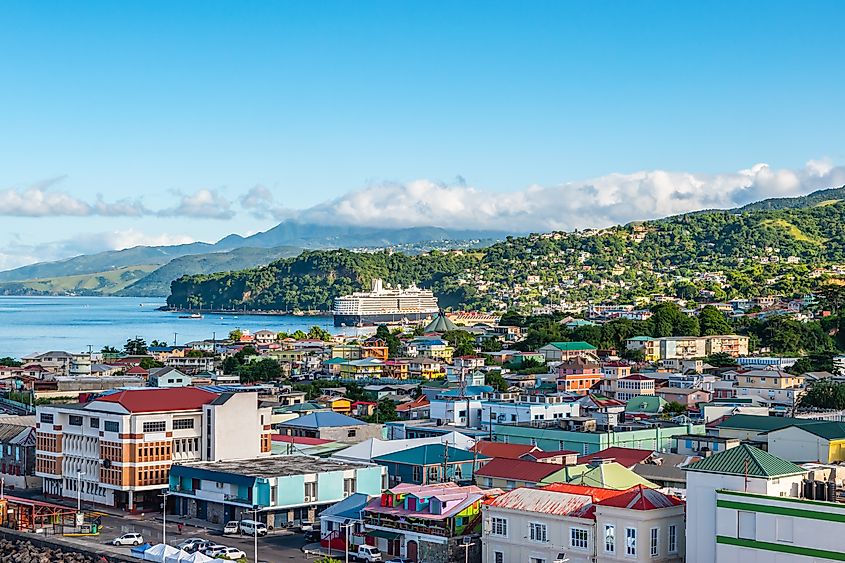
Dominica, the Caribbean’s “Nature Isle,” is set to remain among the world’s tiniest economies in 2025 with a projected nominal GDP of roughly $0.70 billion USD for its 74,000 residents, about $9,500 USD per person. Agriculture still shapes life, bananas, coconuts, and citrus occupy one-fifth of output and two-fifths of jobs, but storm damage, EU market erosion, and falling prices have halved banana earnings since the 1990s. To offset this, Roseau has pushed diversification: niche crops, small soap and coconut-oil factories, and an eco-tourism sector built on rainforest trekking, diving, and cruise calls. Yet the biggest new lifeline is services: an offshore financial hub and a citizenship-by-investment (CBI) program that now tops export crops as the main foreign-exchange earner. Heavy import dependence and hurricane risk keep the trade gap and public debt high, while unemployment hovers above 20%. Still, IMF forecasts real growth near 4% in 2025 as tourism and CBI inflows strengthen under the Eastern Caribbean dollar’s stable peg.
9. Sao Tome and Principe - $864 million GDP
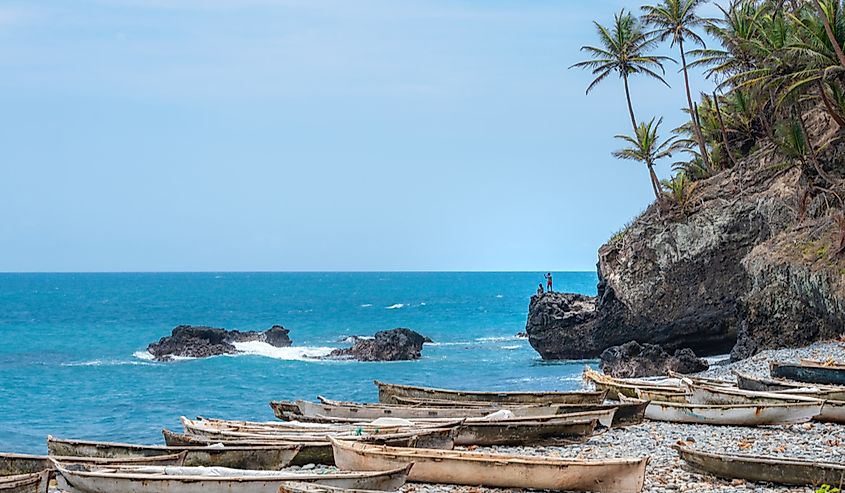
Sao Tome and Príncipe, a two-island Gulf of Guinea micro-state of 230,000 people, is expected to report one of 2025’s smallest nominal GDPs at about $0.864 billion. After decades of dependence on cocoa, today’s economy is dominated by services (81% of GDP), while agriculture and fishing supply 13% and industry just 5%. Real growth stagnated at 0.5% in 2023 after power outages, but the IMF sees a rebound to 2.1% in 2025. Inflation, driven by imported fuel and food, peaked near 21% in 2023 yet should ease to 15% by 2025 under the dobra’s euro peg. Persistent fiscal and current-account gaps (3% and 9% of GDP) are bridged by concessional loans, grants, and remittances; reserves cover less than a month of imports. Limited manufacturing, fragile banks and unreliable energy deter private investment, leaving diversification, and prospective offshore oil, still distant. Poverty remains high despite gains in health and education.
10. Saint Kitts and Nevis - $1.129 billion GDP
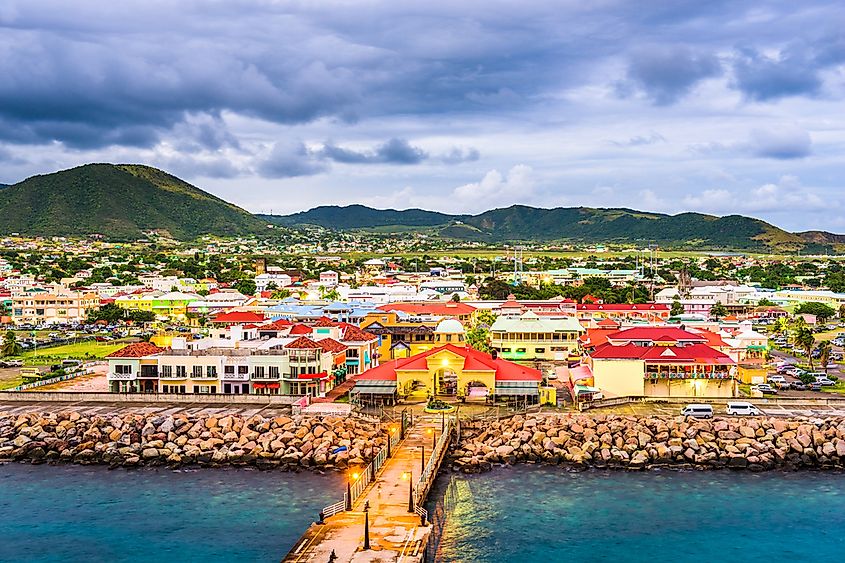
Saint Kitts and Nevis, twin volcanic isles with barely 48,000 residents, will post one of 2025’s smallest national economies, a projected nominal GDP near $1.13 billion USD, but its per-capita figure, around $24,000 USD, ranks among the Caribbean’s highest. Sugar, once the backbone, ceased in 2005; tourism (70% of GDP) and light export assembly now drive growth, joined by a lucrative citizenship-by-investment programme and an expanding fintech/offshore-banking niche under the Eastern Caribbean dollar’s long-standing US-peg. Cruise-ship calls to Port Zante, a UNESCO-listed fortress and the region’s only scenic tourist railway, support steady visitor inflows. At the same time, U.S. veterinary and medical schools generate long-stay demand. Manufacturing clusters in industrial parks assemble electrical components, garments, and beverages, helping cut joblessness below 5%. Agriculture, led by peanuts and sea-island cotton, covers just 3% of output, and most food is imported, widening the trade gap. Public debt fell below 55 % of GDP after fiscal surpluses, yet hurricane exposure and single-market concentration keep vulnerability high despite the IMF-projected 3% real growth for 2025.
Countries Ranked By GDP
| Rank | Country | GDP (Billions of U.S. dollars) |
|---|---|---|
| 1 | Tuvalu | 0.065 |
| 2 | Nauru | 0.169 |
| 3 | Marshall Islands | 0.297 |
| 4 | Kiribati | 0.312 |
| 5 | Palau | 0.333 |
| 6 | Micronesia, Fed. States of | 0.5 |
| 7 | Tonga | 0.568 |
| 8 | Dominica | 0.742 |
| 9 | Sao Tome and Principe | 0.864 |
| 10 | Saint Kitts and Nevis | 1.129 |
| 11 | Samoa | 1.16 |
| 12 | Saint Vincent and the Grenadines | 1.242 |
| 13 | Vanuatu | 1.267 |
| 14 | Grenada | 1.464 |
| 15 | Comoros | 1.548 |
| 16 | Solomon Islands | 1.898 |
| 17 | San Marino | 2.047 |
| 18 | Timor-Leste | 2.115 |
| 19 | Seychelles | 2.198 |
| 20 | Guinea-Bissau | 2.274 |
| 21 | Antigua and Barbuda | 2.373 |
| 22 | Lesotho | 2.404 |
| 23 | Saint Lucia | 2.632 |
| 24 | Gambia, The | 2.771 |
| 25 | Cabo Verde | 2.786 |
| 26 | Central African Republic | 2.932 |
| 27 | Bhutan | 3.422 |
| 28 | Belize | 3.611 |
| 29 | South Sudan, Republic of | 3.998 |
| 30 | Andorra | 4.035 |
| * | Aruba | 4.1 |
| 31 | Suriname | 4.506 |
| 32 | Djibouti | 4.587 |
| 33 | Liberia | 5.166 |
| 34 | Eswatini | 5.483 |
| 35 | Fiji | 6.257 |
| 36 | Burundi | 6.745 |
| 37 | Maldives | 7.48 |
| 38 | Barbados | 7.552 |
| 39 | Sierra Leone | 8.386 |
| 40 | Montenegro | 8.562 |
| 41 | Togo | 10.023 |
| * | Kosovo | 11.274 |
| 42 | Mauritania | 11.47 |
| 43 | Equatorial Guinea | 12.684 |
| 44 | Somalia | 12.994 |
| 45 | Malawi | 13.959 |
| 46 | Namibia | 14.214 |
| 47 | Rwanda | 14.771 |
| 48 | Tajikistan | 14.836 |
| 49 | Bahamas, The | 15.178 |
| 50 | Congo, Republic of | 15.281 |
| 51 | Mauritius | 15.495 |
| 52 | Brunei Darussalam | 16.007 |
| 53 | Lao P.D.R. | 16.322 |
| 54 | Yemen | 17.401 |
| 55 | North Macedonia | 17.885 |
| 56 | Madagascar | 18.708 |
| 57 | Chad | 18.792 |
| 58 | Botswana | 19.4 |
| 59 | Moldova | 19.462 |
| 60 | Kyrgyz Republic | 19.849 |
| 61 | Gabon | 20.391 |
| 62 | Nicaragua | 21.155 |
| 63 | Jamaica | 21.411 |
| 64 | Niger | 21.874 |
| 65 | Benin | 22.236 |
| 66 | Mali | 23.208 |
| 67 | Mozambique | 23.771 |
| 68 | Malta | 25.75 |
| 69 | Mongolia | 25.804 |
| 70 | Guyana | 25.822 |
| 71 | Armenia | 26.258 |
| 72 | Trinidad and Tobago | 26.467 |
| 73 | Burkina Faso | 27.056 |
| 74 | Albania | 28.372 |
| 75 | Bosnia and Herzegovina | 28.807 |
| 76 | Zambia | 28.91 |
| 77 | Guinea | 30.094 |
| 78 | Sudan | 31.506 |
| 79 | Papua New Guinea | 32.835 |
| 80 | Haiti | 33.548 |
| 81 | Senegal | 34.728 |
| 82 | Iceland | 35.309 |
| 83 | Georgia | 35.353 |
| 84 | El Salvador | 36.749 |
| 85 | Zimbabwe | 38.172 |
| 86 | Honduras | 38.172 |
| 87 | Cyprus | 38.736 |
| 88 | Estonia | 45.004 |
| 89 | Paraguay | 45.465 |
| 90 | Latvia | 45.535 |
| 91 | Nepal | 46.08 |
| 92 | Libya | 47.484 |
| 93 | Bahrain | 47.829 |
| 94 | Cambodia | 49.799 |
| * | Macao SAR | 53.354 |
| 95 | Cameroon | 56.011 |
| 96 | Jordan | 56.102 |
| 97 | Tunisia | 56.291 |
| 98 | Bolivia | 56.339 |
| 99 | Uganda | 64.277 |
| 100 | Myanmar | 64.944 |
| 101 | Belarus | 71.561 |
| 102 | Slovenia | 75.224 |
| 103 | Azerbaijan | 78.87 |
| 104 | Congo, Dem. Rep. of the | 79.119 |
| 105 | Uruguay | 79.731 |
| 106 | Tanzania | 85.977 |
| 107 | Ghana | 88.332 |
| 108 | Turkmenistan | 89.054 |
| 109 | Lithuania | 89.192 |
| 110 | Panama | 91.675 |
| 111 | Serbia | 92.549 |
| 112 | Cote D'Ivoire | 94.483 |
| 113 | Luxembourg | 96.613 |
| 114 | Croatia | 98.951 |
| 115 | Costa Rica | 102.591 |
| 116 | Oman | 104.351 |
| 117 | Venezuela | 108.511 |
| 118 | Angola | 113.343 |
| 119 | Bulgaria | 117.007 |
| 120 | Ethiopia | 117.457 |
| 121 | Guatemala | 121.177 |
| * | Puerto Rico | 122.522 |
| 122 | Ecuador | 125.677 |
| 123 | Dominican Republic | 127.828 |
| 124 | Kenya | 131.673 |
| 125 | Uzbekistan | 132.484 |
| 126 | Slovak Republic | 147.031 |
| 127 | Kuwait | 153.101 |
| 128 | Morocco | 165.835 |
| 129 | Nigeria | 188.271 |
| 130 | Ukraine | 205.742 |
| 131 | Qatar | 222.776 |
| 132 | Hungary | 237.07 |
| 133 | New Zealand | 248.666 |
| 134 | Iraq | 258.02 |
| 135 | Greece | 267.348 |
| 136 | Algeria | 268.885 |
| 137 | Kazakhstan | 300.538 |
| 138 | Peru | 303.293 |
| 139 | Finland | 303.945 |
| 140 | Portugal | 321.44 |
| 141 | Iran | 341.013 |
| 142 | Chile | 343.823 |
| 143 | Egypt | 347.342 |
| 144 | Czech Republic | 360.244 |
| 145 | Romania | 403.395 |
| 146 | South Africa | 410.338 |
| * | Hong Kong SAR | 423.999 |
| 147 | Colombia | 427.766 |
| 148 | Malaysia | 444.984 |
| 149 | Denmark | 449.94 |
| 150 | Bangladesh | 467.218 |
| 151 | Vietnam | 490.97 |
| 152 | Philippines | 497.495 |
| 153 | Norway | 504.276 |
| 154 | Austria | 534.301 |
| 155 | Thailand | 546.224 |
| 156 | United Arab Emirates | 548.598 |
| 157 | Singapore | 564.774 |
| 158 | Israel | 583.361 |
| 159 | Ireland | 598.84 |
| 160 | Sweden | 620.297 |
| 161 | Argentina | 683.533 |
| 162 | Belgium | 684.864 |
| * | Taiwan Province of China | 804.889 |
| 163 | Switzerland | 947.125 |
| 164 | Poland | 979.96 |
| 165 | Saudi Arabia | 1083.749 |
| 166 | Netherlands | 1272.011 |
| 167 | Indonesia | 1429.743 |
| 168 | Turkiye | 1437.406 |
| 169 | Mexico | 1692.64 |
| 170 | Australia | 1771.681 |
| 171 | Korea, Republic of | 1790.322 |
| 172 | Spain | 1799.511 |
| 173 | Russian Federation | 2076.396 |
| 174 | Brazil | 2125.958 |
| 175 | Canada | 2225.341 |
| 176 | Italy | 2422.855 |
| 177 | France | 3211.292 |
| 178 | United Kingdom | 3839.18 |
| 179 | Japan | 4186.431 |
| 180 | India | 4187.017 |
| 181 | Germany | 4744.804 |
| 182 | China, People's Republic of | 19231.71 |
| 183 | United States | 30507.22 |
| - | Afghanistan | no data |
| - | Eritrea | no data |
| - | Lebanon | no data |
| - | Sri Lanka | no data |
| - | Syria | no data |
| - | Pakistan | no data |
* Macao and Hong Kong are both Special Administrative Regions of the People’s Republic of China. Taiwan Province of China is considered by the UN to be part of the PRC. Puerto Rico is an unincorporated territory of the United States. Aruba is a constituent country within the Kingdom of the Netherlands but is not a UN member. Kosovo is recognized by many states but is not a UN member (status disputed.)
